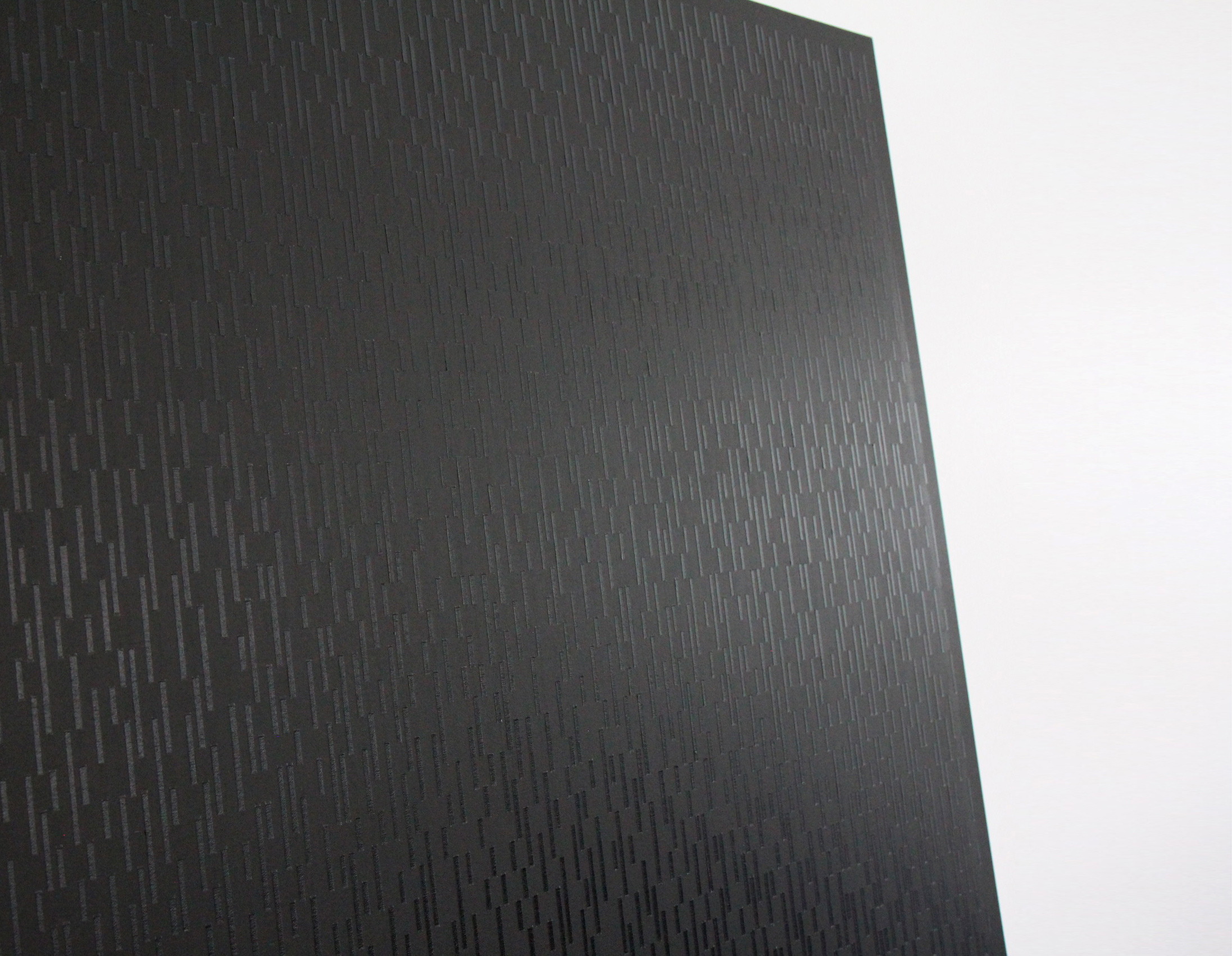ARTWORK
2021. 6-channel sound installation (20mins duration): 3 steel stands, 6 cone speakers, 3 amplifiers, 3 media players, 3 USB flash drives containing 3x 2-channel audio files, power adapters and electrical cabling. Each stand 1700mm x 300mm x 1600mm, overall dimensions variable.
[ MFA final work. Elam, University of Auckland ]
Information is complicated, riddled with biases inherent in its producers. In her essay ‘Situated Knowledges’ (1988), feminist theorist Donna Haraway argues knowledge is located in a certain time, place, and social and cultural context. This concept was employed to reflect on gender inequity within the histories of STEM and early conceptual female artists working with STEM, including Agnes Denes (US, b. 1931)—the project title references two of her works. The first half of the 20-minute piece is comprised of field recordings made at the University of Auckland: electromagnetic field recordings made within Elam’s main building; recordings made within the Faculty of Science building (chosen in response to 7 UoA science professors who publically claimed mātauranga Māori isn’t science); and the anechoic chamber at the Acoustic Research Centre, which has 9 academic staff, all male. The second half of the composition is an etching by Agnes Denes converted to sound.
︎ View Video
Truth Approximations & Echo Chambers
2021. 6-channel sound installation (20mins duration): 3 steel stands, 6 cone speakers, 3 amplifiers, 3 media players, 3 USB flash drives containing 3x 2-channel audio files, power adapters and electrical cabling. Each stand 1700mm x 300mm x 1600mm, overall dimensions variable.
[ MFA final work. Elam, University of Auckland ]
Information is complicated, riddled with biases inherent in its producers. In her essay ‘Situated Knowledges’ (1988), feminist theorist Donna Haraway argues knowledge is located in a certain time, place, and social and cultural context. This concept was employed to reflect on gender inequity within the histories of STEM and early conceptual female artists working with STEM, including Agnes Denes (US, b. 1931)—the project title references two of her works. The first half of the 20-minute piece is comprised of field recordings made at the University of Auckland: electromagnetic field recordings made within Elam’s main building; recordings made within the Faculty of Science building (chosen in response to 7 UoA science professors who publically claimed mātauranga Māori isn’t science); and the anechoic chamber at the Acoustic Research Centre, which has 9 academic staff, all male. The second half of the composition is an etching by Agnes Denes converted to sound.
︎ View Video
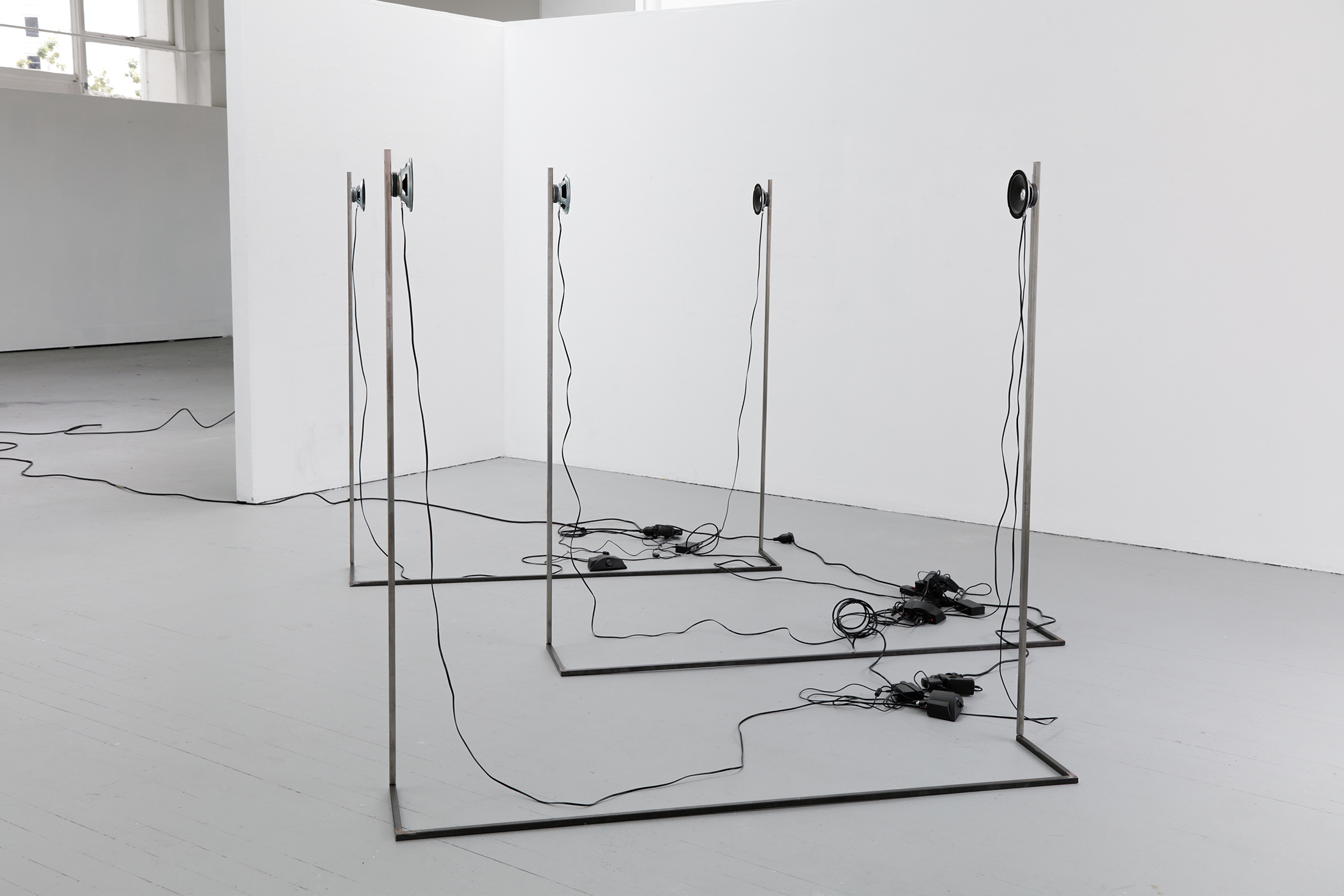
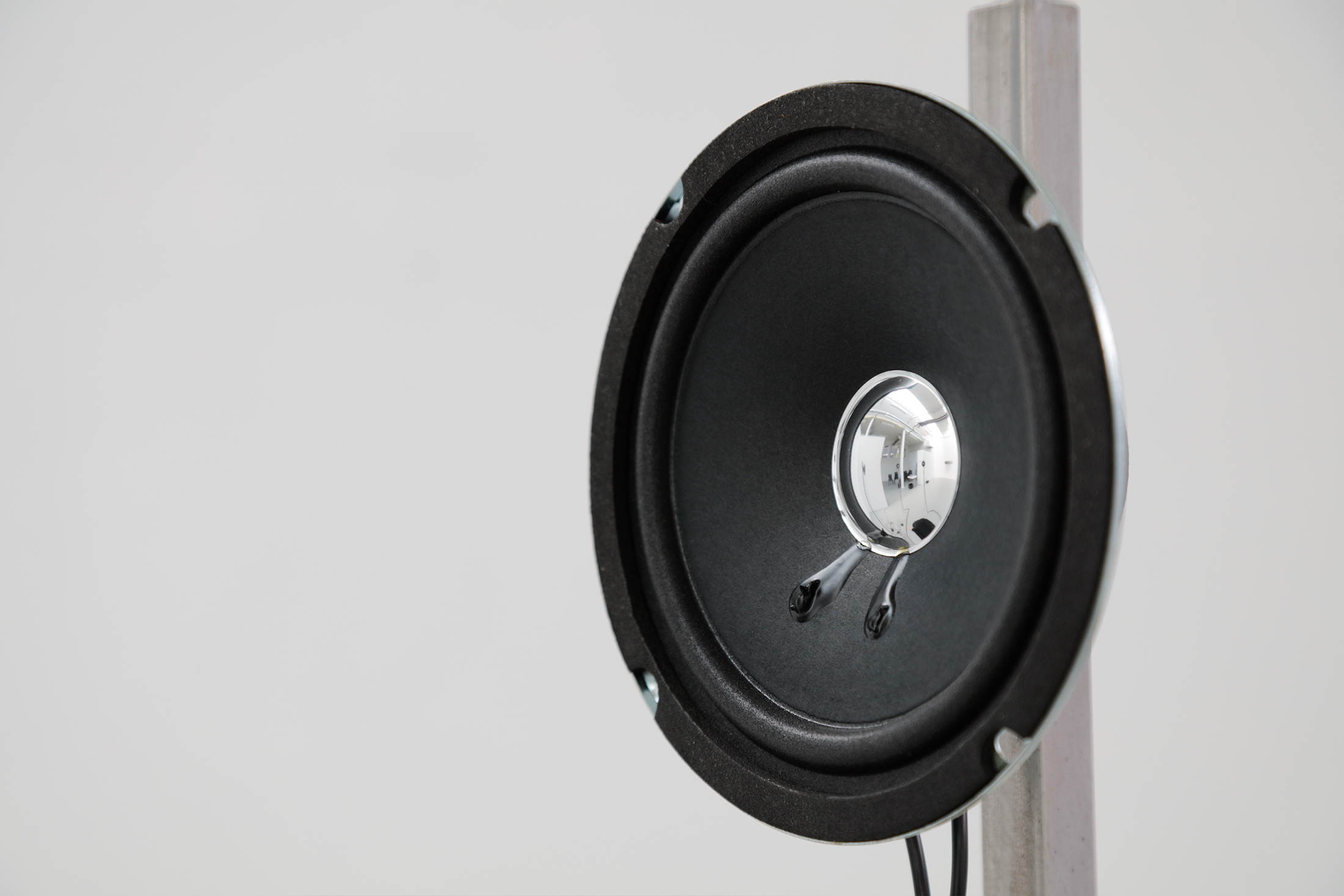
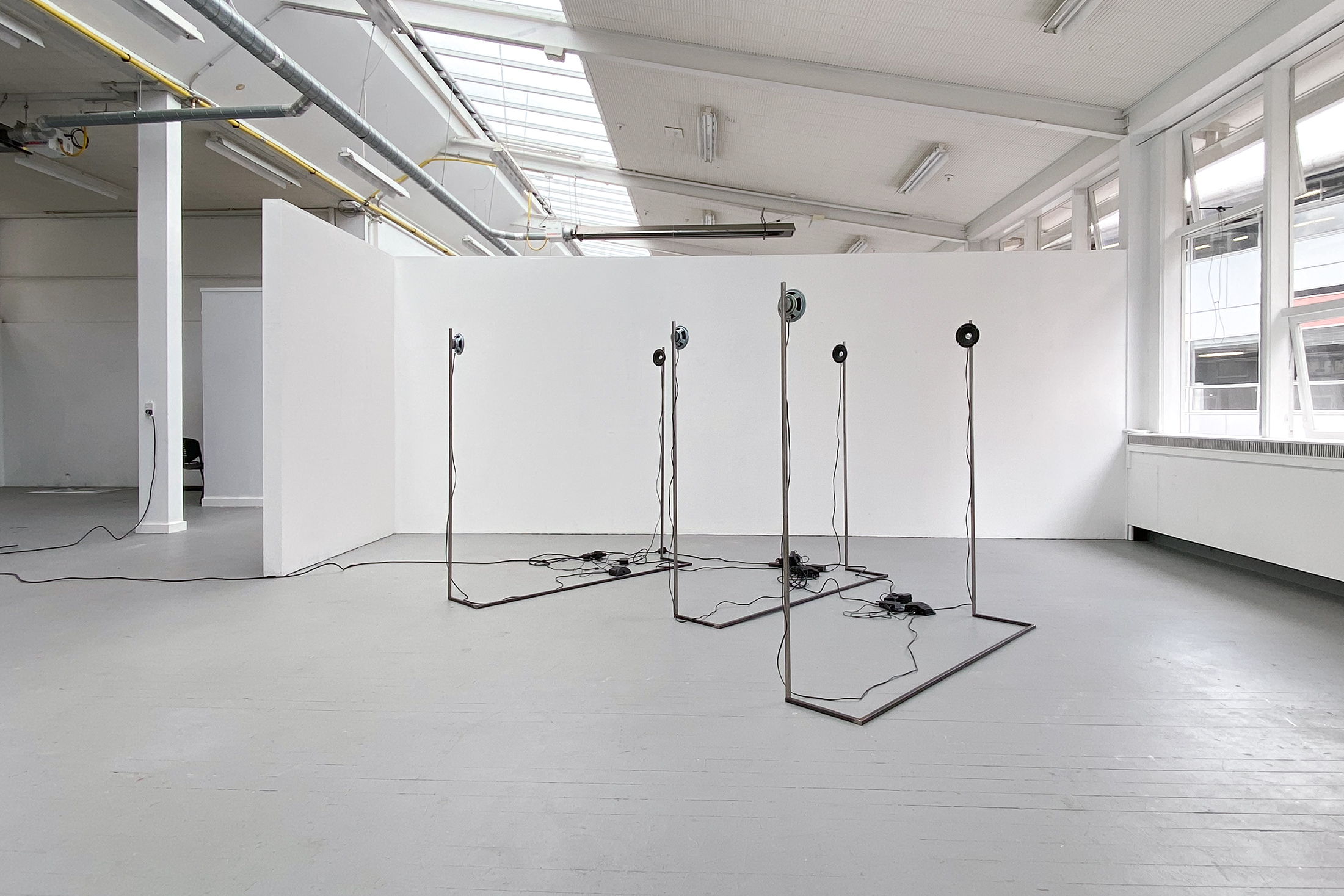
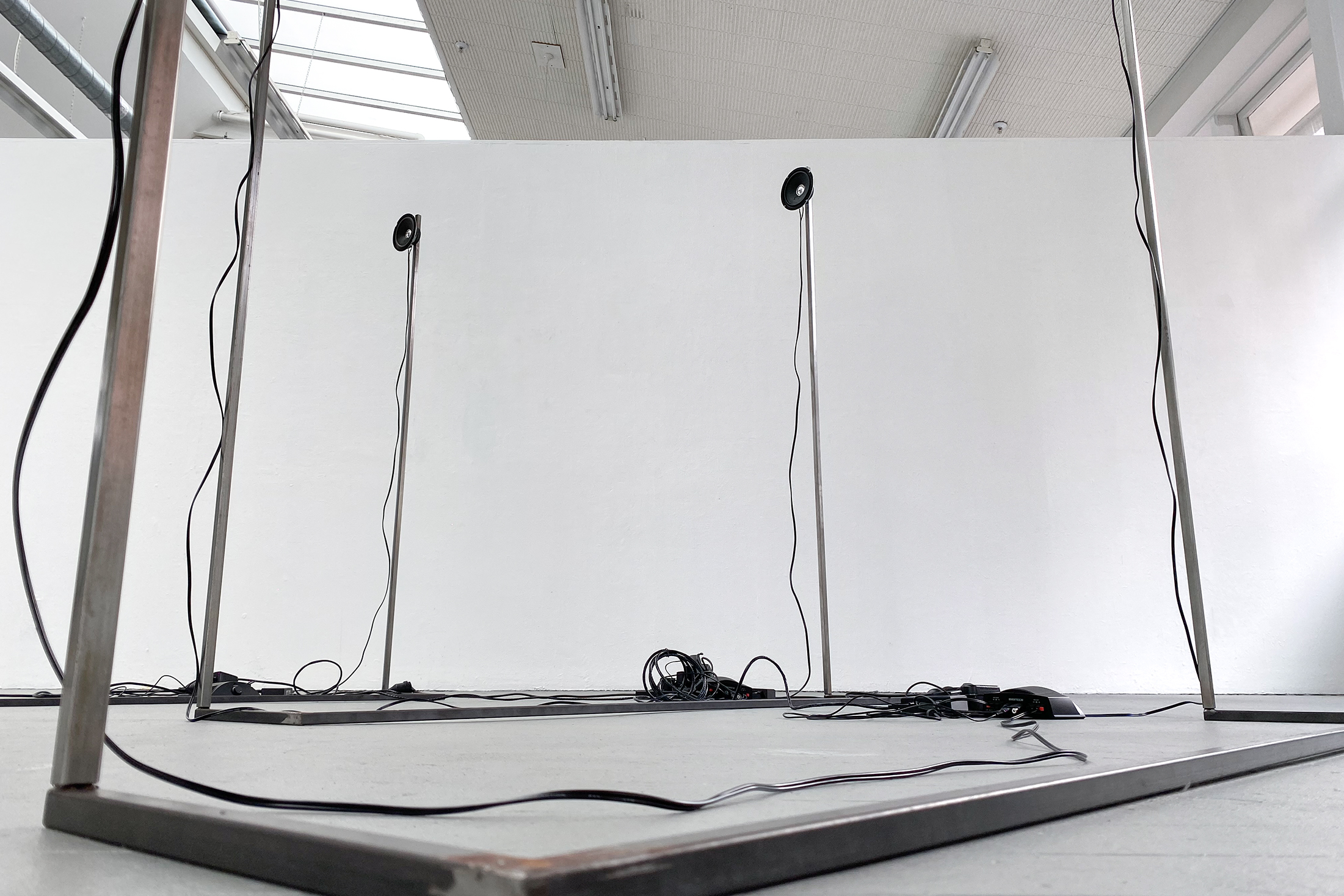
1/4
Drawing, Synopsis & Song
2020.
[Audio Foundation, solo exhibition]
An exhibition centred around 17th century German astronomer and mathematician Maria Cunitz, who made a significant contribution to astronomy, yet she is not commonly known. A crater on planet Venus is named after her, as other Venusian craters are named after "deceased women who have made outstanding or fundamental contributions to their field". Found information is represented and reinterpreted through kinetic objects, video, sound, diagrams and drawings. The title for the exhibition comes from a 1974 work by German conceptual artist Hanne Darboven, who devised her own numerical system to create musical notation.
︎ View Website
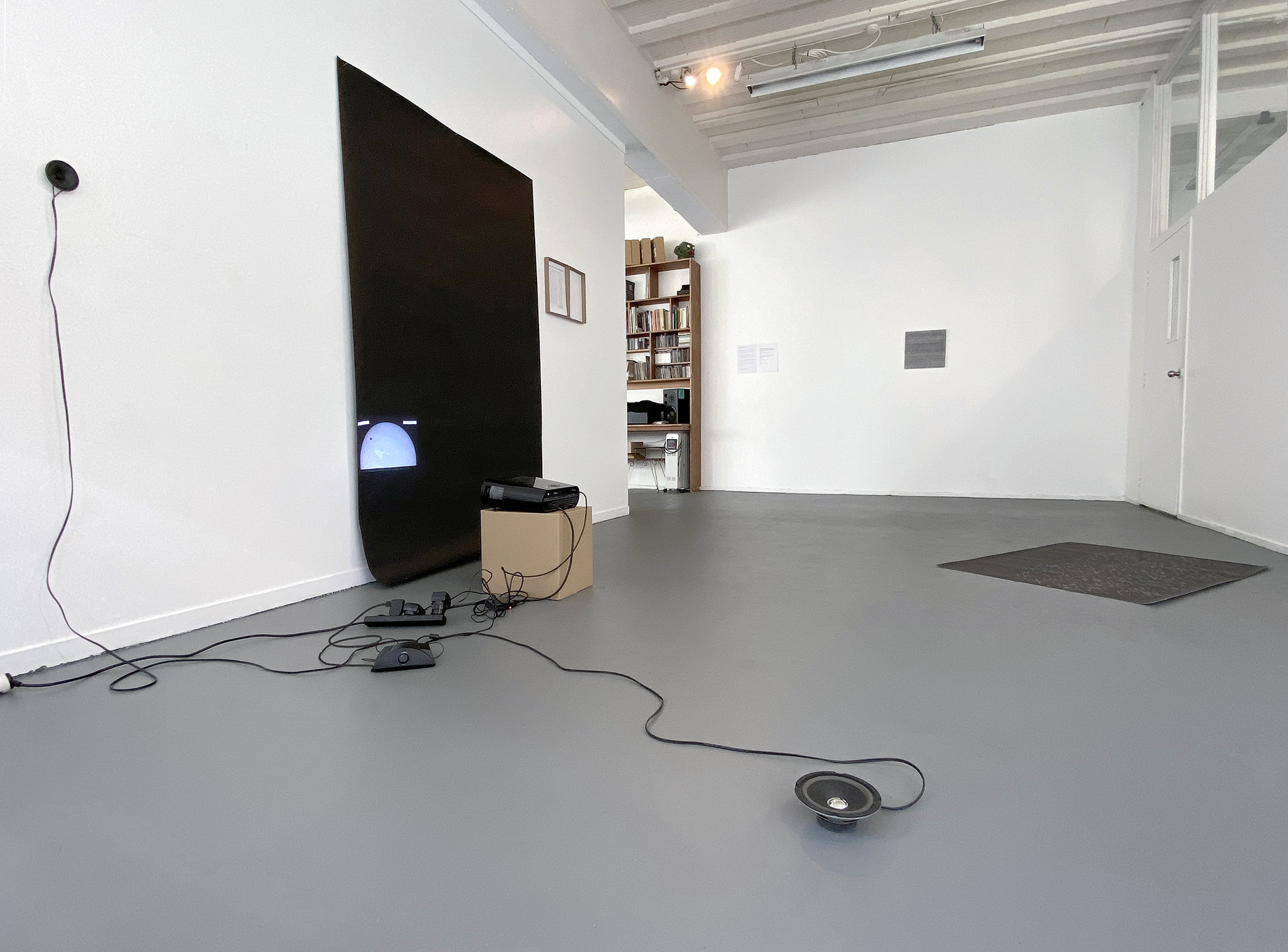


Retrograde
2020. 3 wood dowels, 3x 3rpm motors in casing, electrical cabling, single light source. Each object 1580mm x 110mm x 60mm, overall dimensions variable.
[’Drawing, Synopsis & Song’, Audio Foundation]
Referencing astronomer Cunitz’s ephemeris for locating a planet on its elliptical path, these slow rotating objects are markers of time.
Venus Observed
2019. Video projector, Raspberry Pi, cardboard, paper, 2 cone speakers, amplifier, iPod and mp3 file, power adapters, electrical cabling. Dimensions variable.
[’Drawing, Synopsis & Song’, Audio Foundation]
Found Video: 2004 Venus Transit as observed by the National Solar Observatory Integrated Synoptic Program (NISP), Canary Islands site. Source: NISPScience channel, YouTube. Found Audio: Sound recording taken on Venus by Russian spacecraft Venera 14, in 1982. 57mins of atmospheric noise was recorded (radio transmitted to satellite) before the sputnik was destroyed by the 465C temperature and atmosphere pressure. Venus is the most inhospitable planet in our solar system. Source: Soviet Space Program channel, YouTube. Field Recording: Sound recording of a circular kinetic object, marking its location with sound.



24
2019. Digital print on paper, 2 cardboard tray frames. 456mm x 318mm
[’Drawing, Synopsis & Song’, Audio Foundation]
A page of calculations from the book Urania Propitia, self-published by astronomer Maria Cunitz in 1650. Every occurrence of number 24 is highlighted then proposed as graphical notation. The number 24 references the artwork 24 Songs, A Form and B Form, Index (1974) by German conceptual artist Hanne Darboven, a series of musical compositions devised from her own numerical notation system.

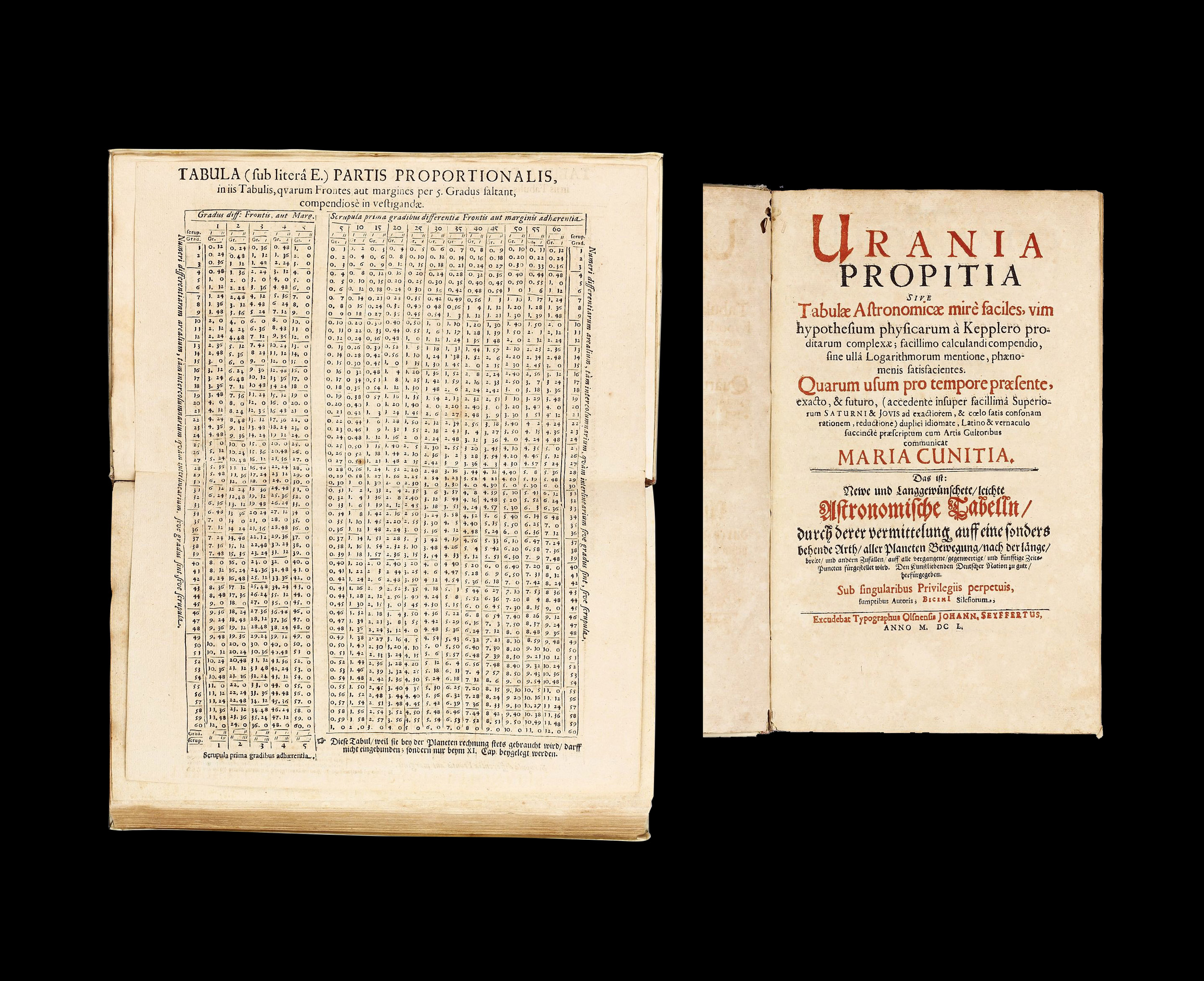
Craters of Venus Map
2019. Digital print, 841 x 1188mm
[’Drawing, Synopsis & Song’, Audio Foundation]
[’Present Tense: Wāhine Toi Aotearoa’, Enjoy, Wellington; Laurel Project Space, Dunedin; Britomart, Auckland]
A map of each named crater on planet Venus. Those over 20kms in diameter are named after deceased women who have made significant contributions to their field, and those 20km or less are attributed female first names. Consequently, with the names of famous women confined to Venus there are few on other celestial bodies. Mercurian craters are named after famous writers, artists, and composers, of the 413 named craters only 33 are women. As of 2019 the governing body responsible for planetary nomenclature, the International Astronomical Union (IAU), is made up of almost 82% male members.
An iteration of the map was included in the travelling exhibition ‘Present Tense: Wāhine Toi Aotearoa’ for Designers Speak (up).


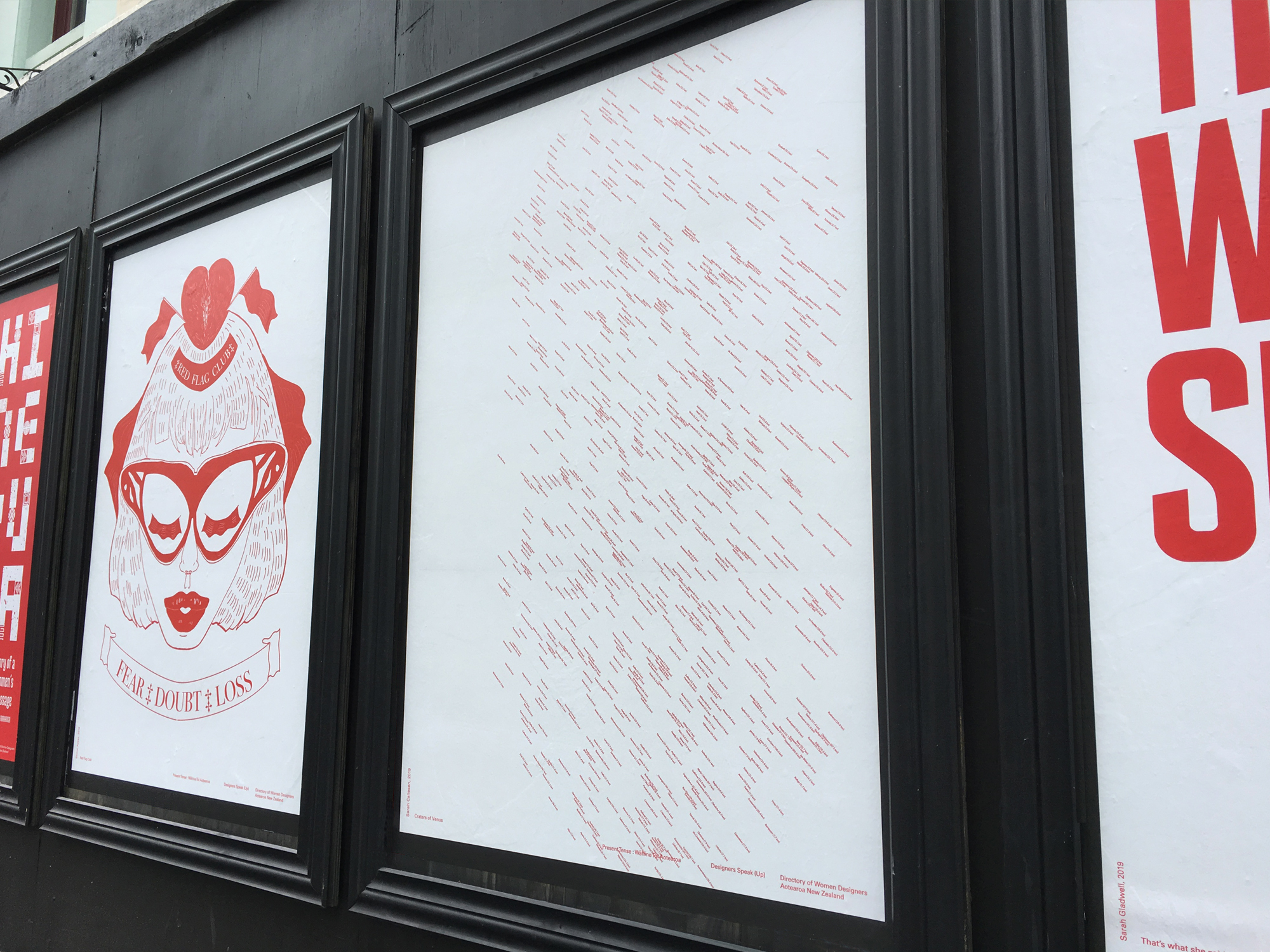

Plinth
2019. Intaglio print on rag paper. 210 x 190mm

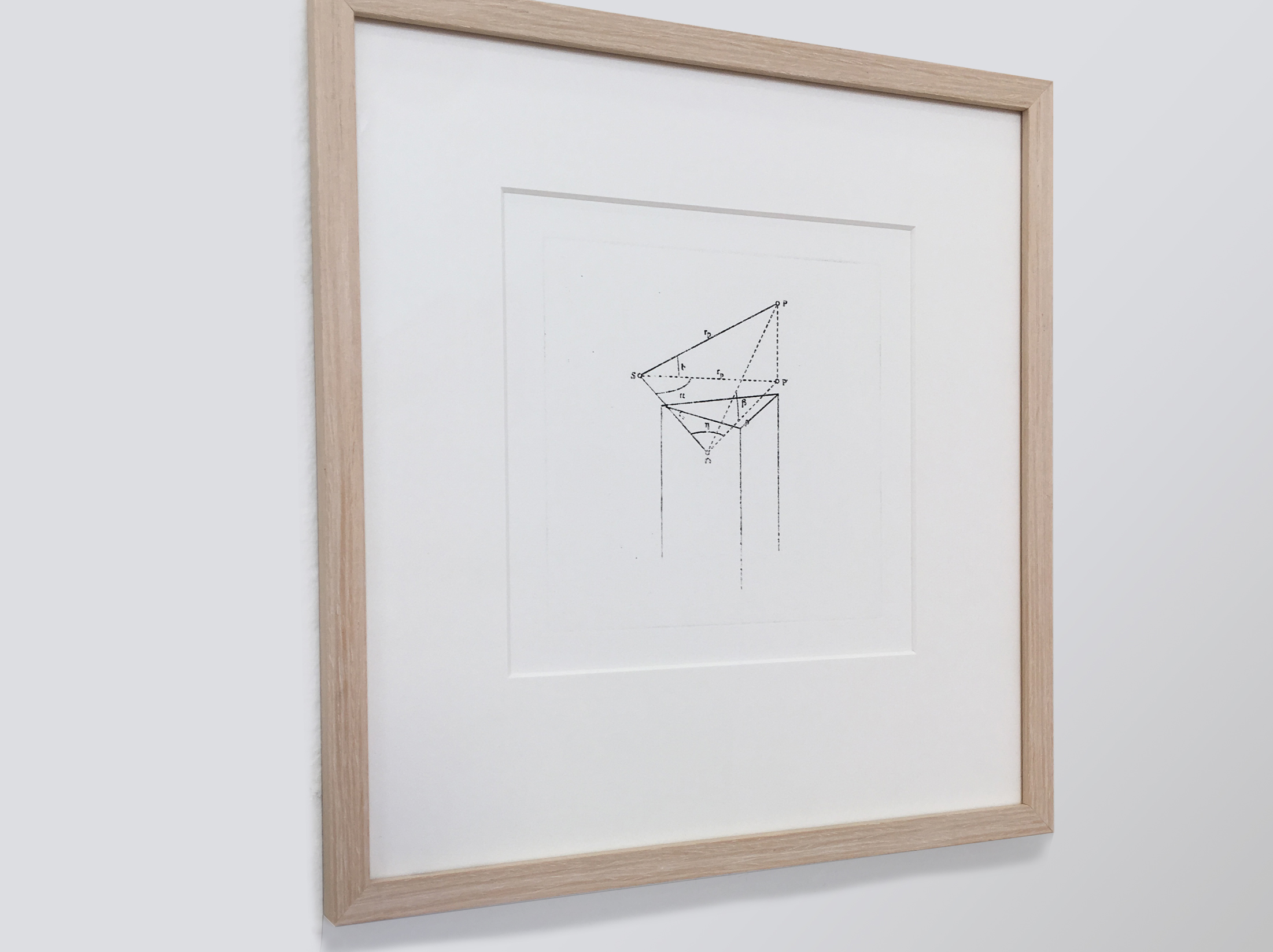

Zwischenraum
2019. Blind deboss on rag paper. 315 x 192mm
The German word zwischenraum translates into multiple words in English, including gap, space, between, interspace, cavity and void. The paper size is the same size as Maria Cunitz’s book Urania Propetia (1650), the earliest surviving scientific work by a woman at the highest level of its age. Self-published in both Latin and German, which was uncommon at the time. She is considered the leading female astronomer of the early modern era, yet she remains largely unknown today.
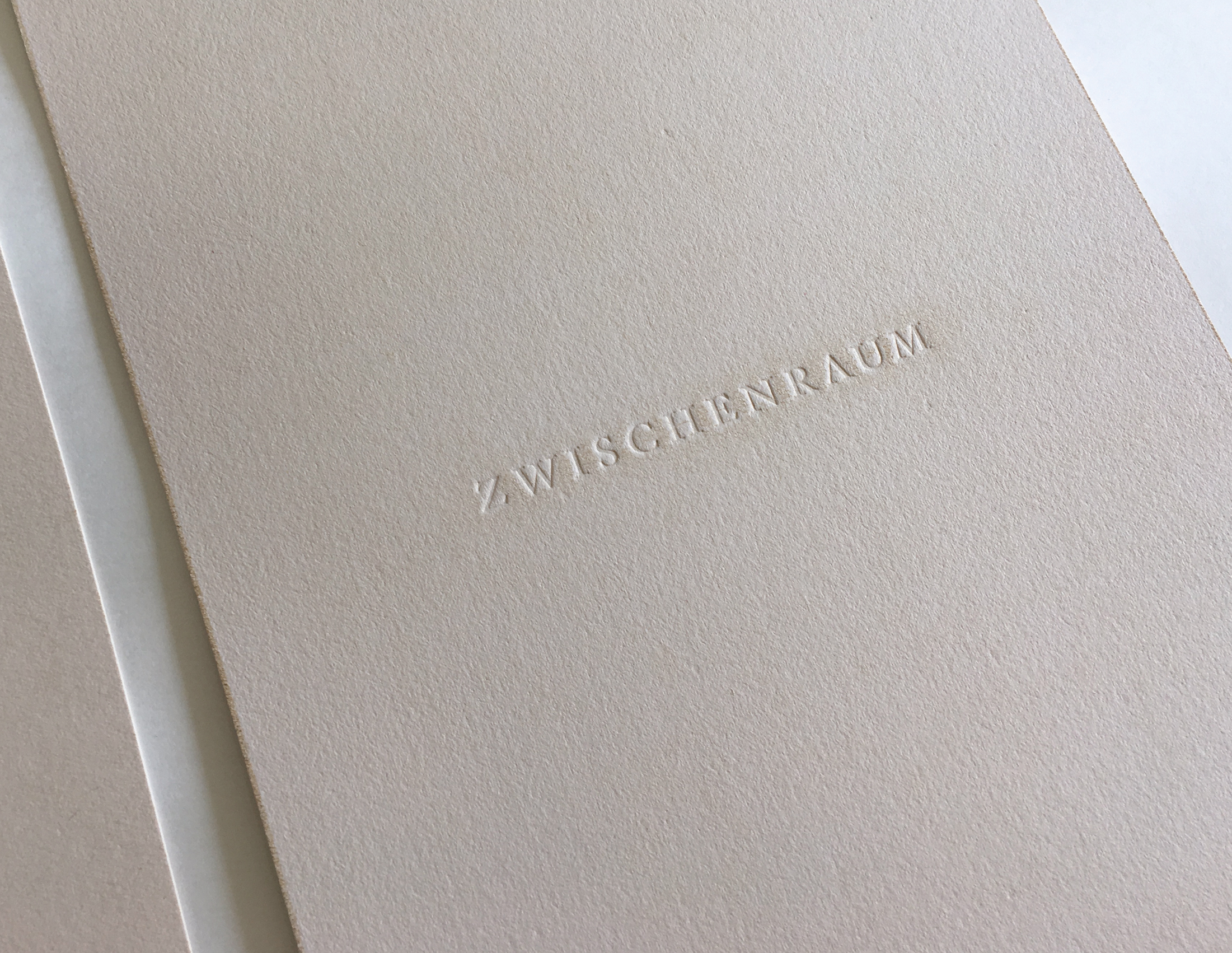
Sound of Kepler Star 01 & 02
2019. Contact prints on photographic paper, 166 x 254mm
NASA mp3 audio files of the Kepler star (light curve waves converted to sound) which I converted to visual spectrograms using software. The y axis represents frequency/pitch, the x axis is time, the light areas are sound. Printed onto acetate, then onto photographic paper by being exposed to light in a darkroom.
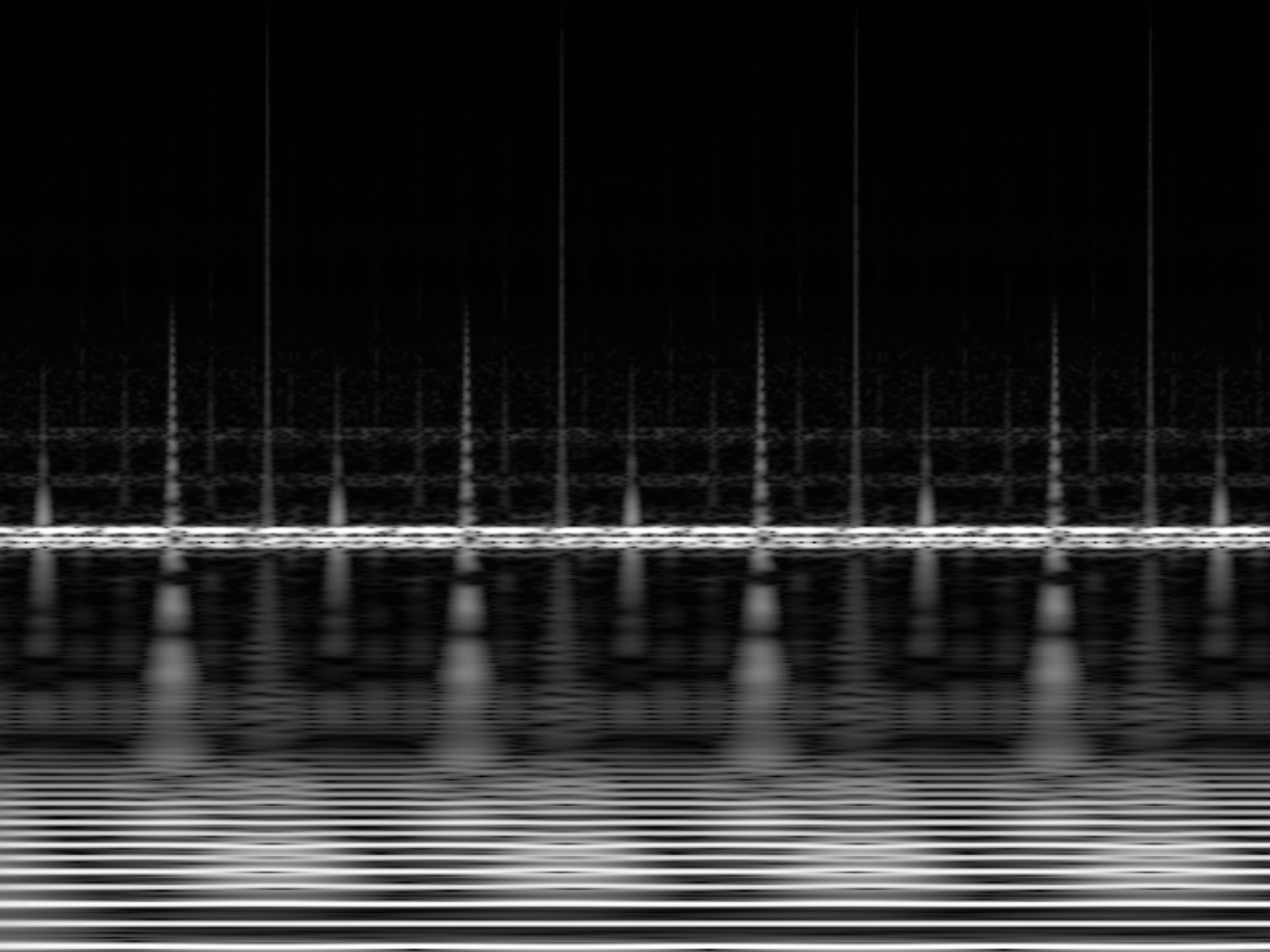
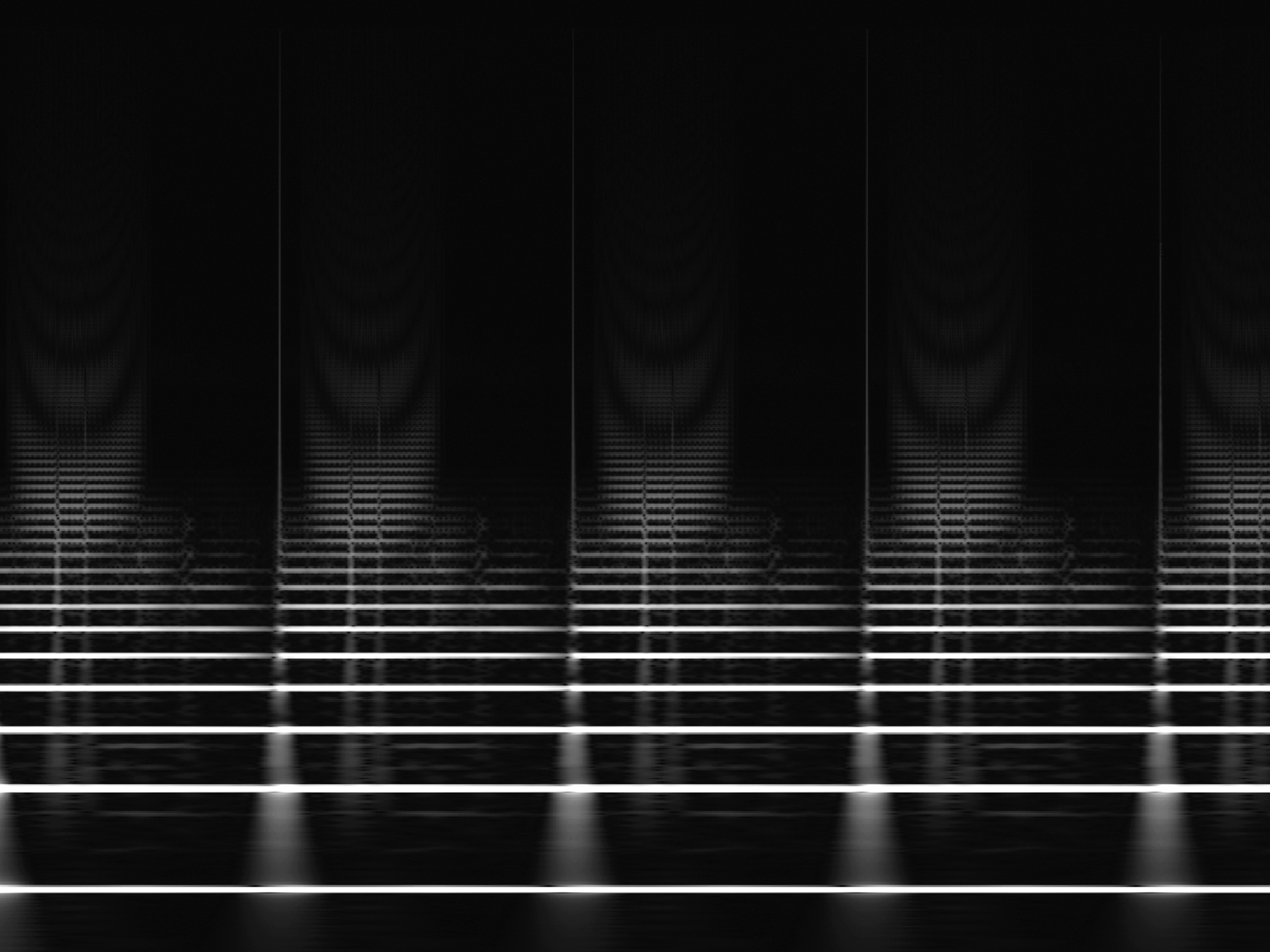
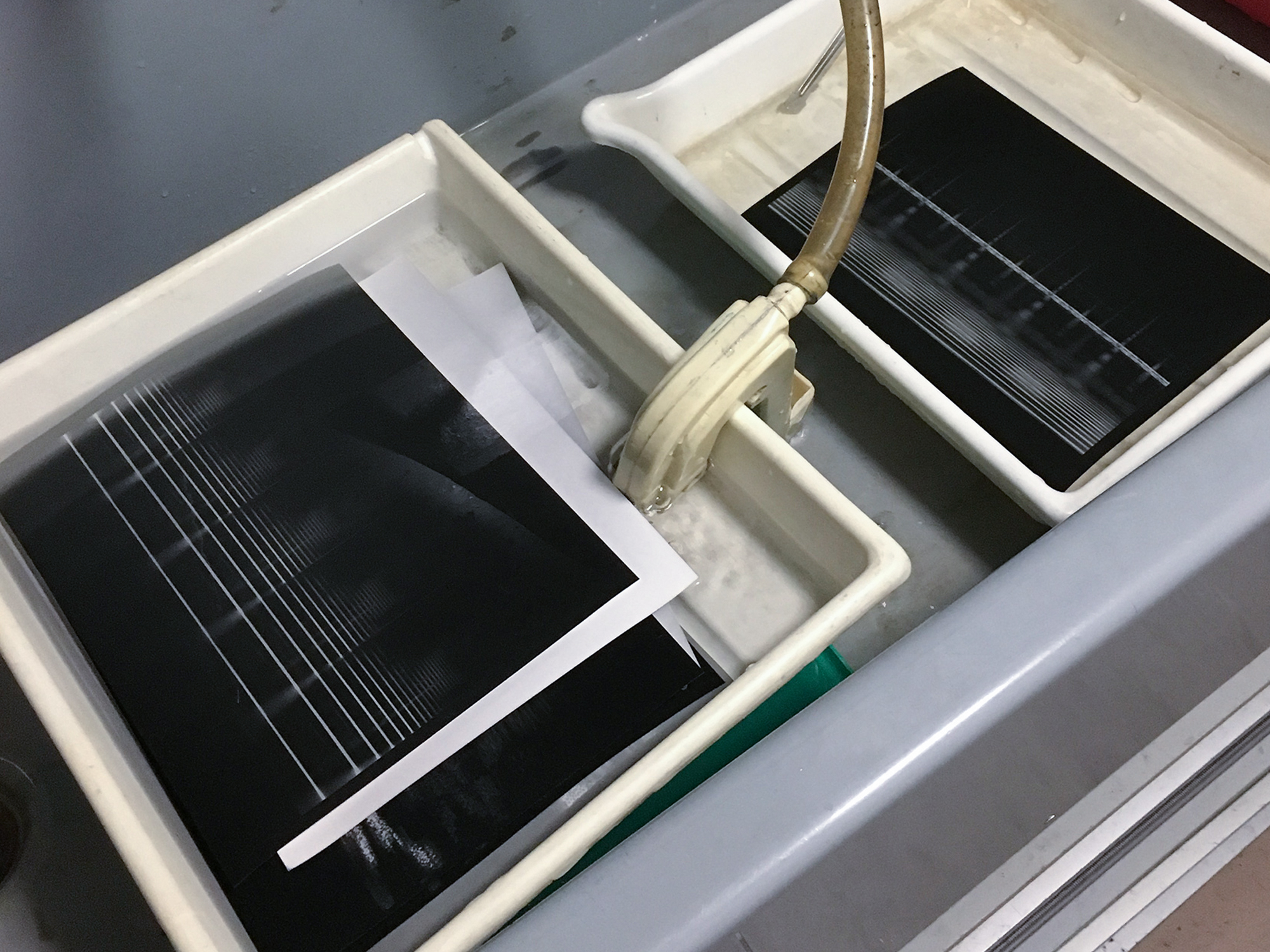
I Wish to Communicate With You
With Rachel Ashby + Others
[Whanaungatanga, Projects, Auckland Art Fair 2019]
A work commissioned by Britomart for Art Fair Projects 2019. Britomart’s waterfront location and port activity led us to the International Code of Signals (ICS), an international visual and aural communication system used by vessels at sea. The idea of a ‘universal language’ is fraught and political, we played on the failings of such an idealised system, through a collaborative live sound performance. 14 musicians and performers were invited to produce a sound in response to a modified ICS flag, and attribute a new meaning to that flag. Gathering at Takutai Square, the performance involved members of the public, invited to select and raise a sequence of flags, to which the musicians responded aurally (with their interpretation of the flags meaning)—the public creating a composition using the sounds created by each musician. The title of the performance comes from the international code K (Kilo) meaning “I wish to communicate with you”.
︎ View Website
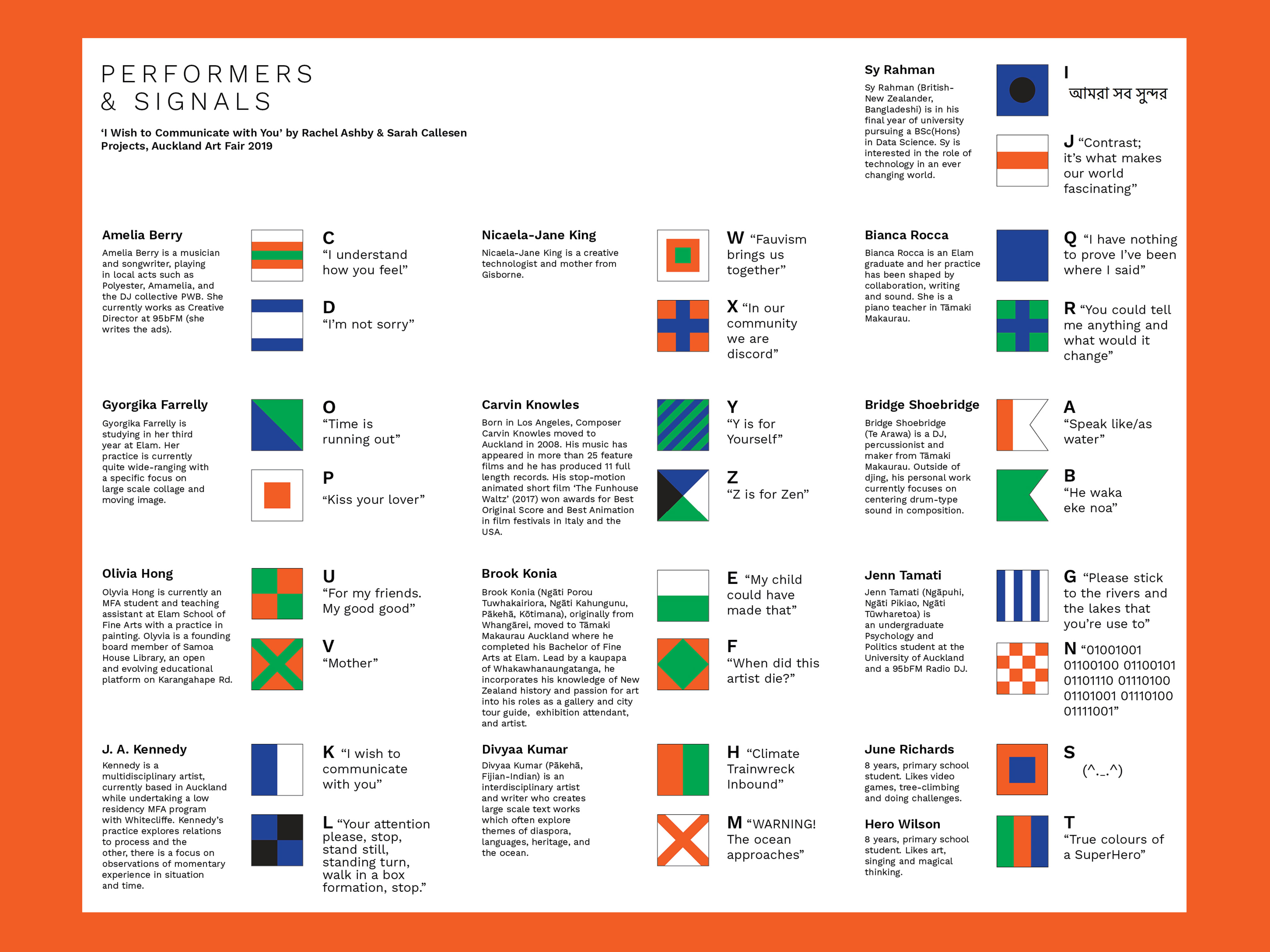
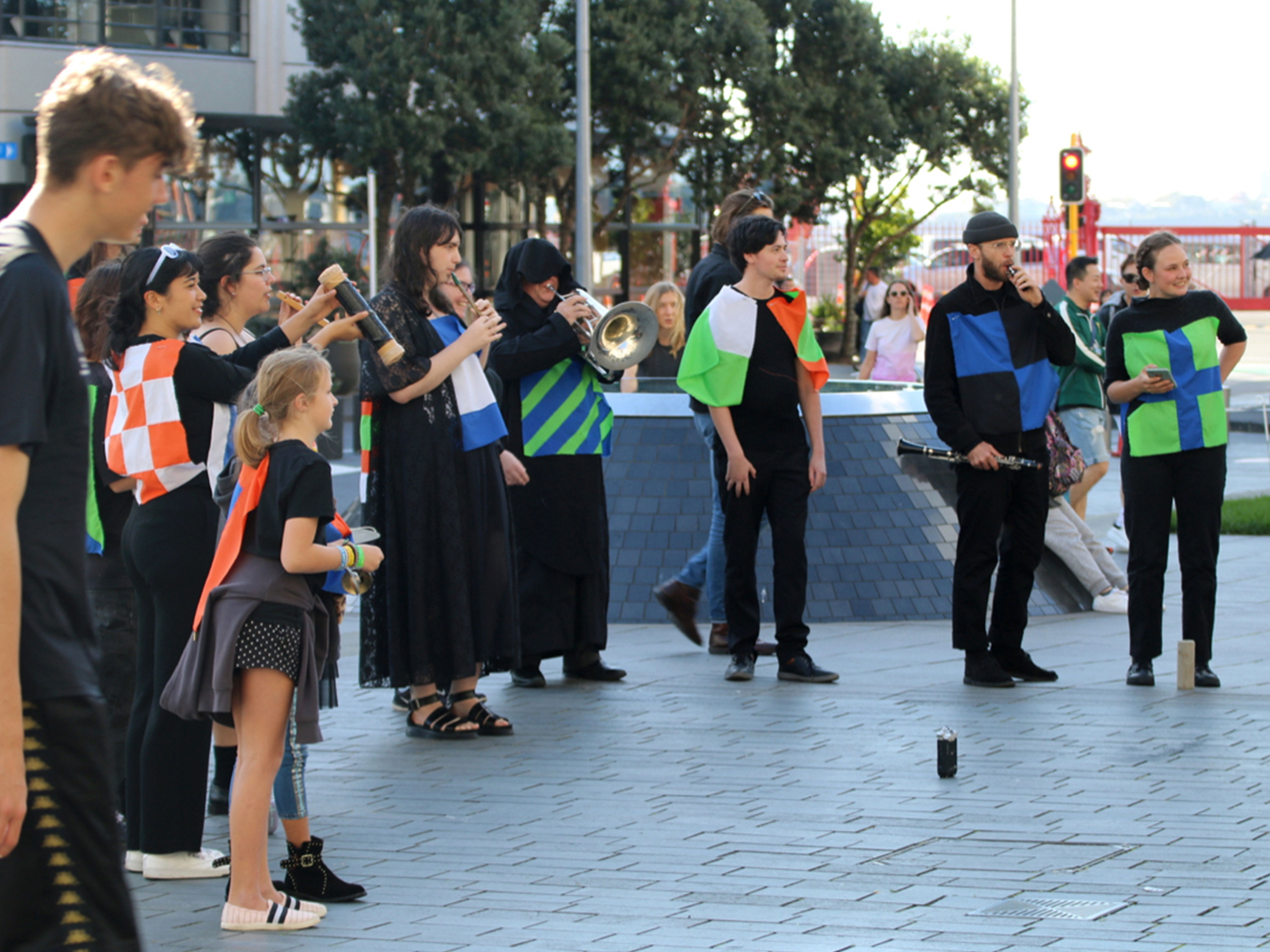

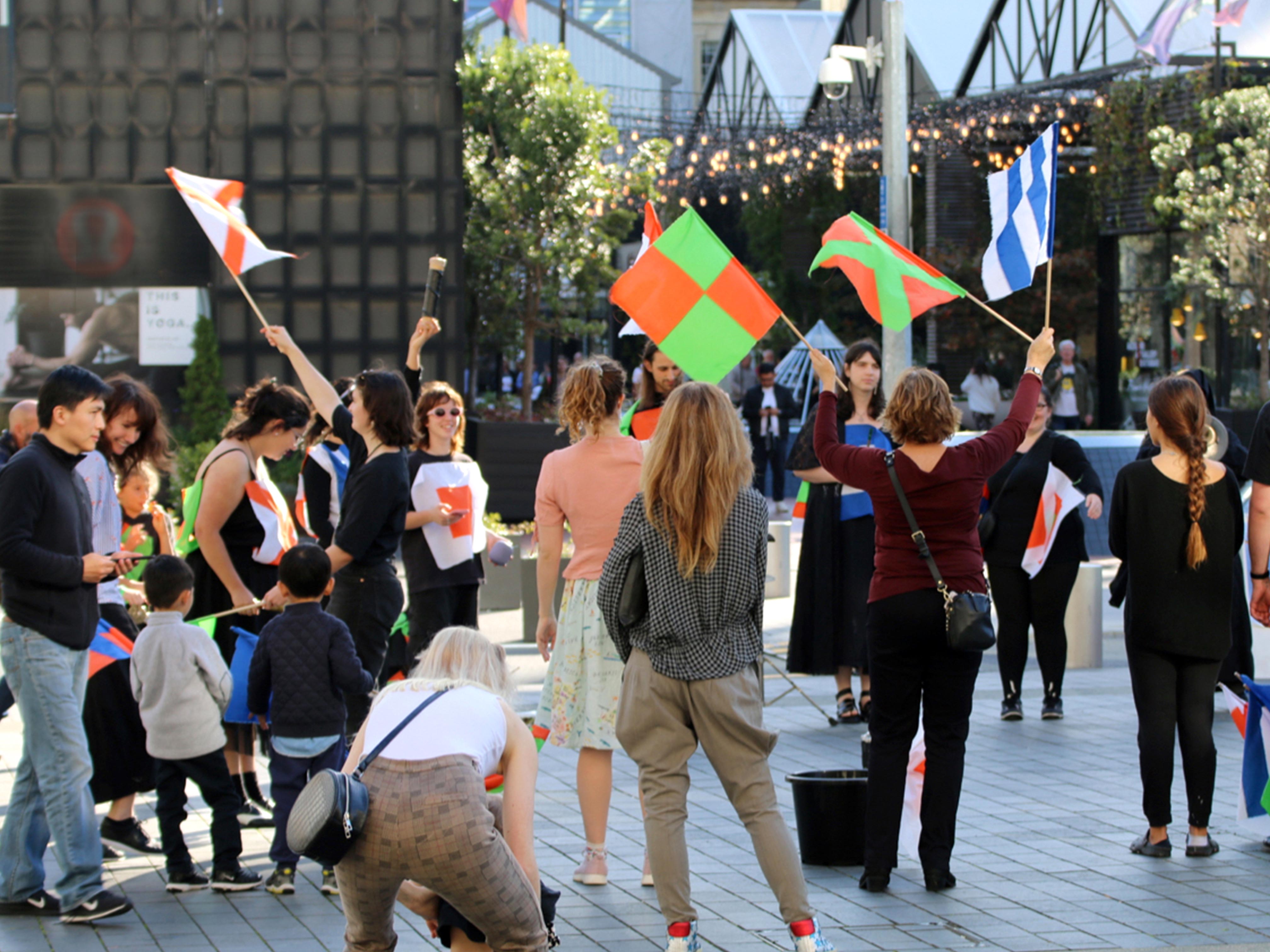
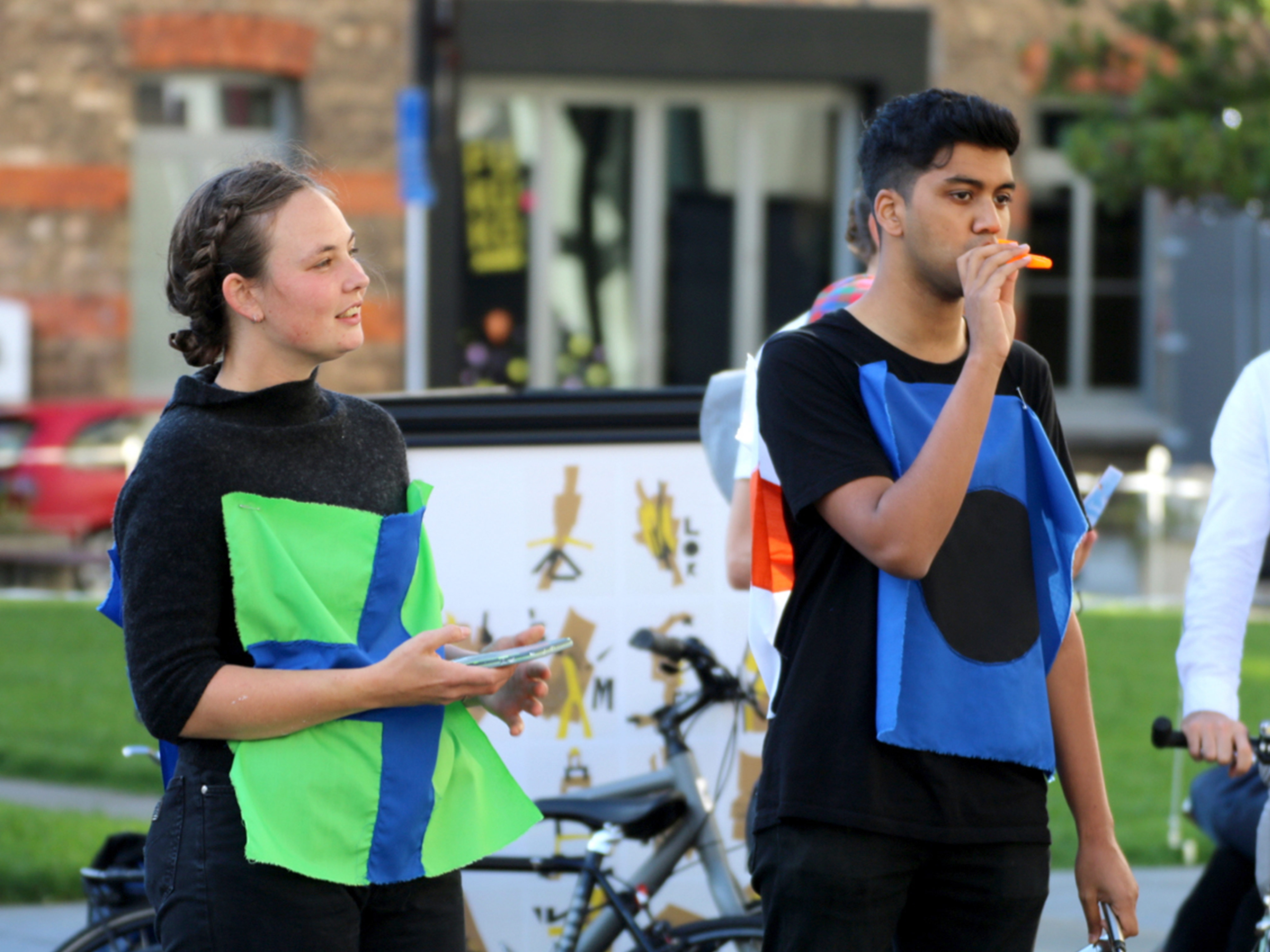

The Entities
With Shelley Simpson
2018. 2x Video projectors, 5 loudspeakers, audio file, (15mins duration)
[RM Gallery]
Our experience of the world around us is often mediated by technology, contributing to the idea that humans are separate from nature. In The Entities, we uses visual and audio recordings to construct a ‘natural’ world, exploring relationships between human and non-human, natural and artificial, culture and nature. All recording is subjective, mediated by both humans and technologies used in the process. The Entities considers the role of each player within the communication system, where each offers its own affect. The sound piece I created in response to Simpson’s macro photography, considers change in sound at a qualitative scale other than loudness. Echo and reverb are tropes often used in film to exaggerate the sound of small things. Natural history documentaries often apply imagined sounds to visual footage, particularly for small fauna such as insects, which are too minute to capture with existing technology. Designed sound in film, television and now virtual environments, continue to fabricate what humans imagine unheard phenomena to sound like.
︎ View Video
︎ View Website

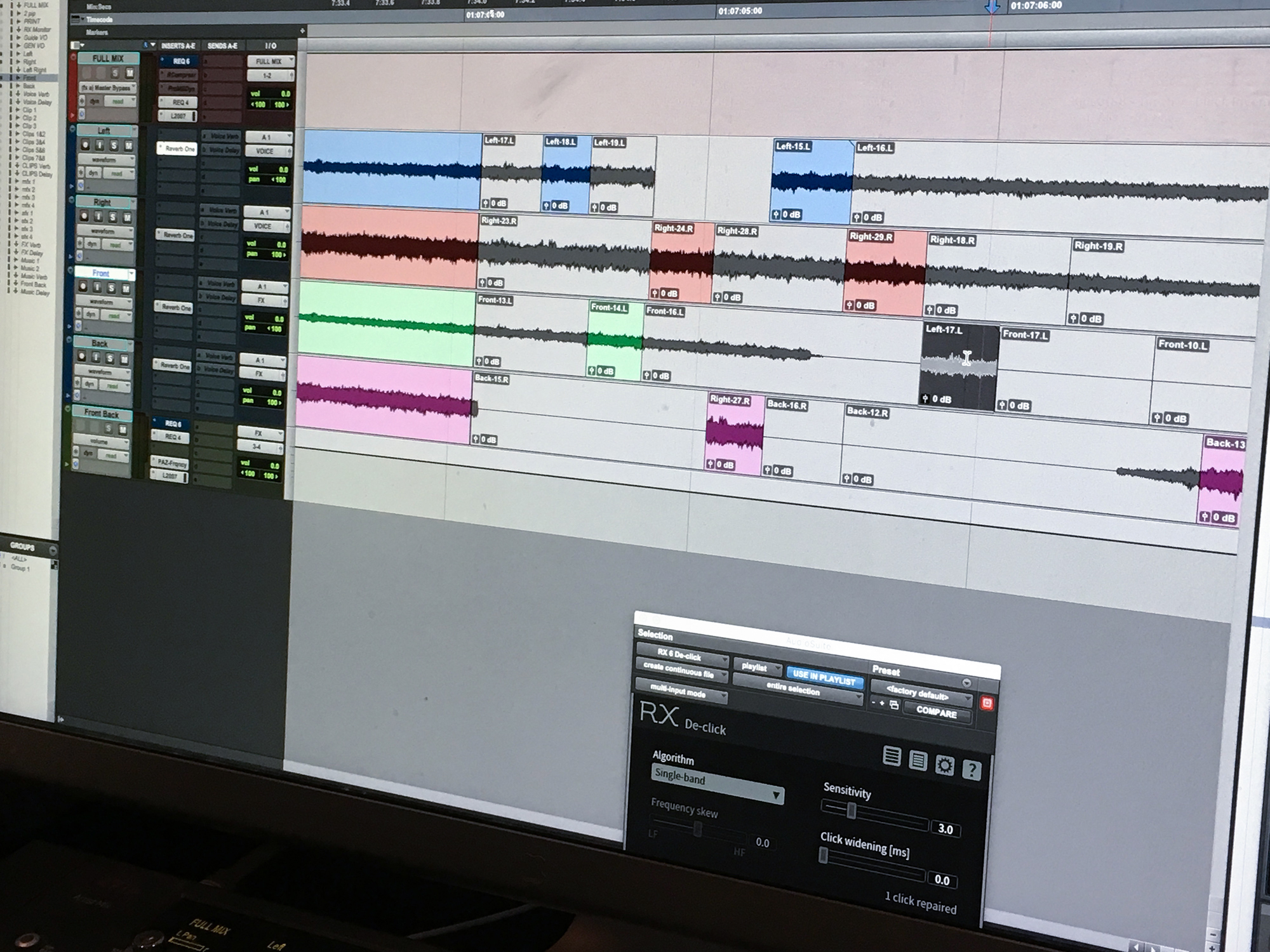
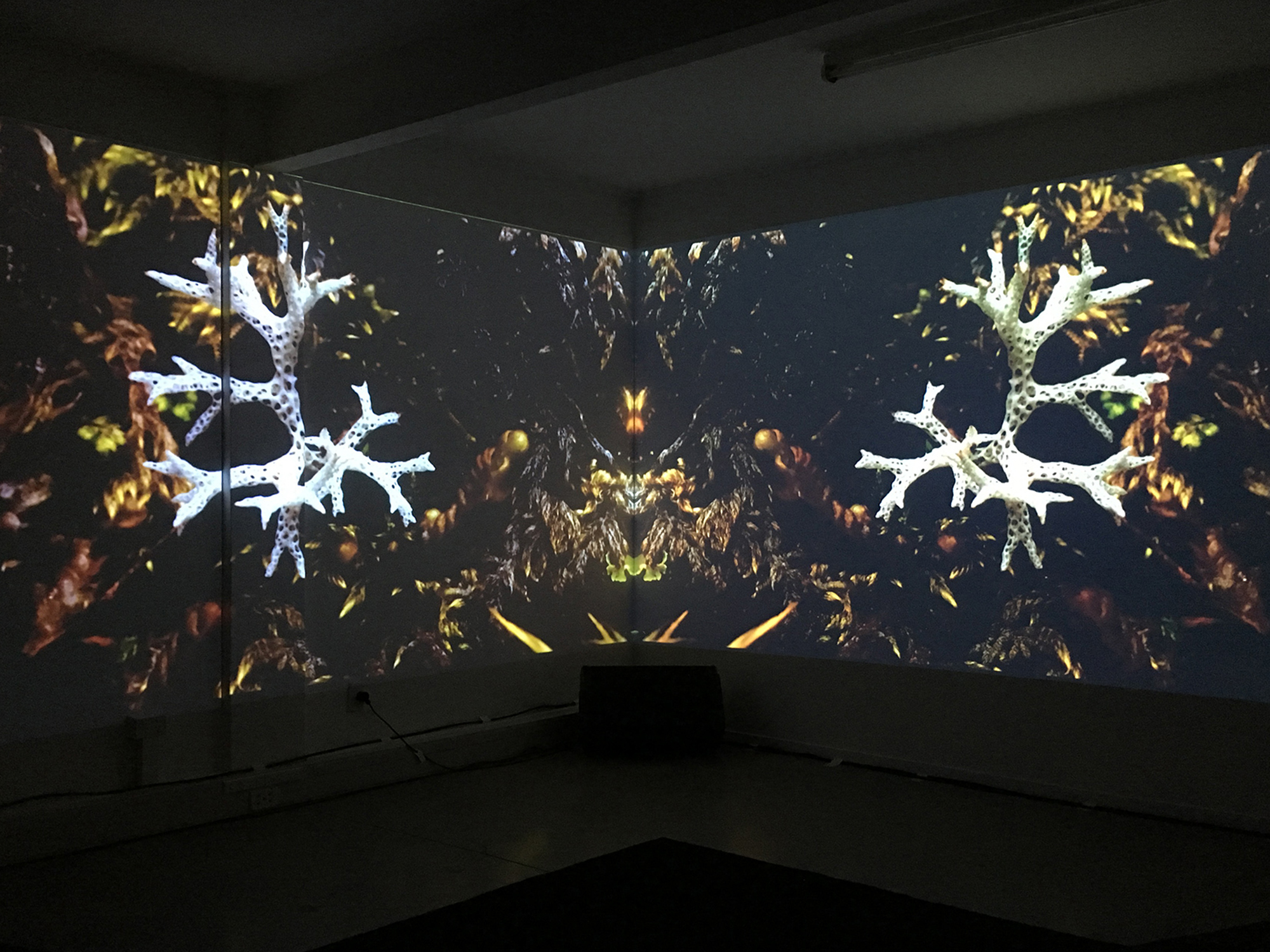
Ground State
2018. Acrylic ink on unstretched canvas, 2200mm x 1500mm; 2 self-powered loudspeakers, mp3 file and player.
[Projects, Auckland Art Fair 2018]
Sound recordings made using a hydrophone lowered into water from Queens wharf, taken during the day and at night. A large drawing on canvas was then produced based on this listening experience, and sections of the drawing then converted to sound using software. The audio piece is made up of the underwater recordings and drawing segments. Sound art pioneer Pauline Oliveros’ ‘deep listening’ concept was referenced in this process.
Commissioned by Creative New Zealand.
︎ View Website
︎ Listen

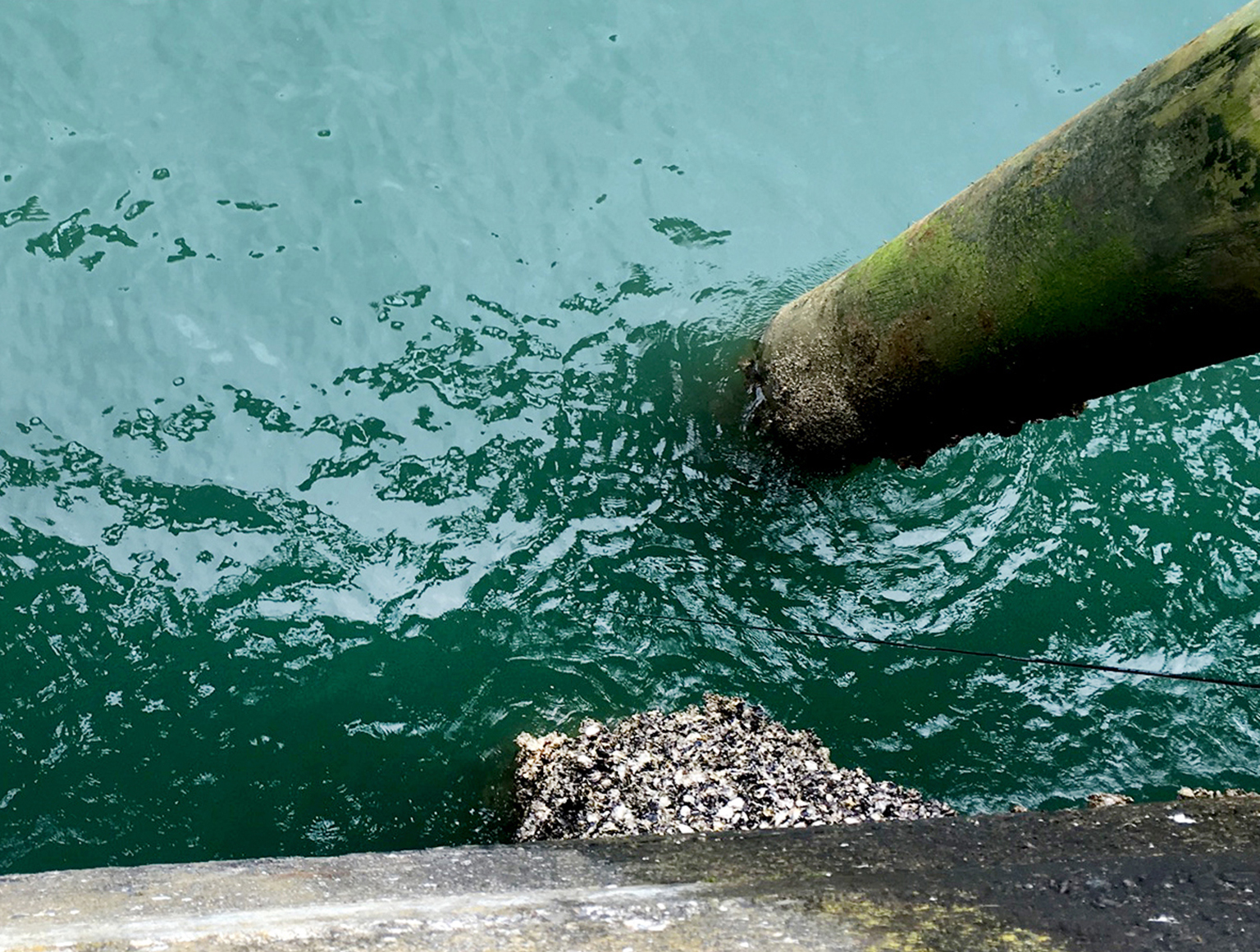

Lithographs
2019. ‘Time Field - Spectulative Audio Drawing’, 760 x 575mm. Audio file.
2018. ‘Notes on Radigue’, 760 x 575mm. Audio file.
[Parkin Drawing Prize Exhibition - Merit Award]
[Auckland Print Studio at Paper Contemporary, Sydney Contemporary]
Two lithographic prints produced during a residency at the Auckland Print Studio, a prize awarded during postgraduate study at Elam School of Fine Arts. A system of linear mark-making was employed, where decisions made on one line effect the outcome of the next. Sections of the prints were then converted to sound using software, and recorded onto a limited run of 7”records—which accompany each print.
AVAILABLE
Enquire




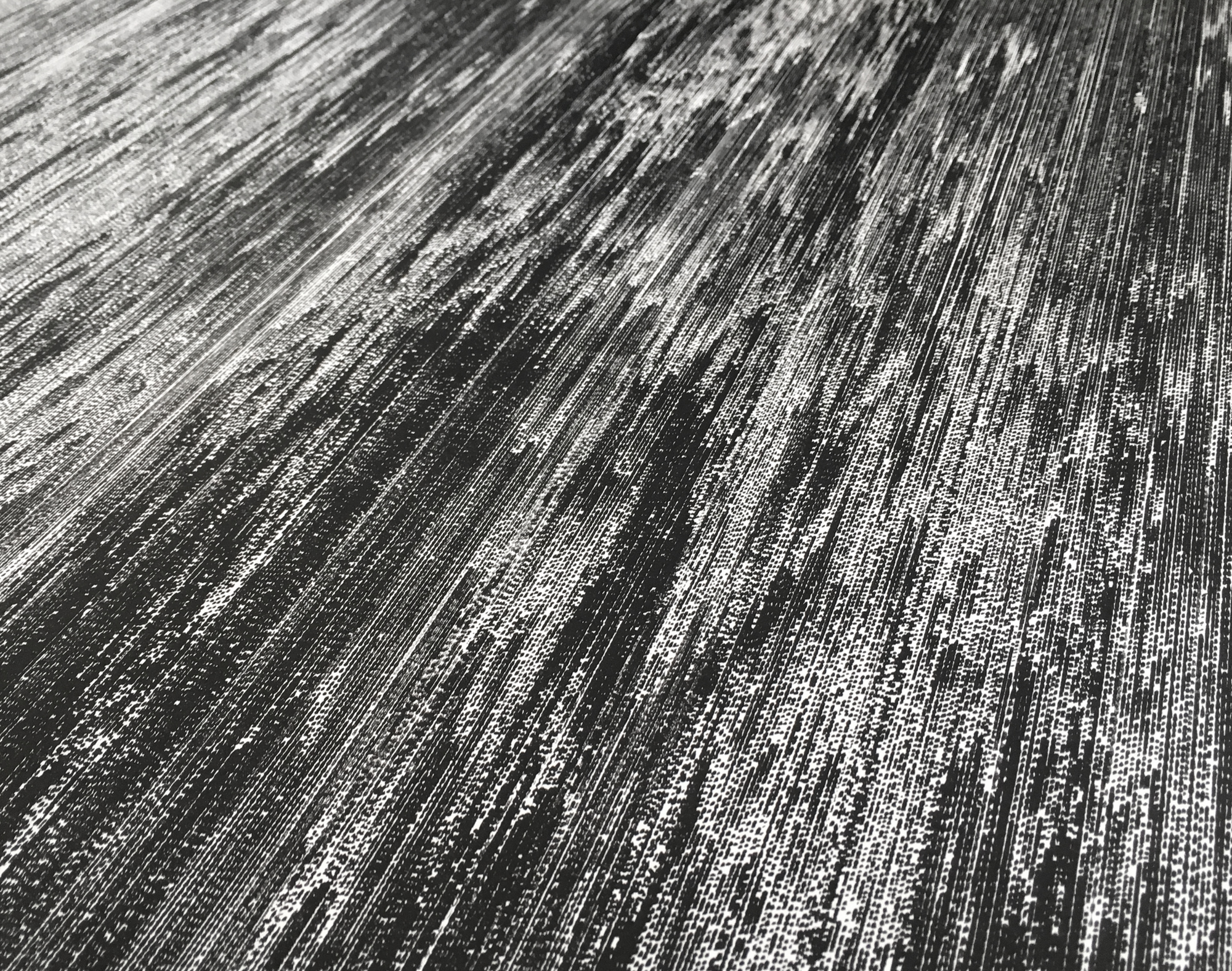

Open Circuit Potential
2017. Acrylic ink on unstretched canvas, 2200mm x 1500mm; lathe-cut 12” polycarbonate disc, record player, two self-powered speakers, cables, metal and glass stand; pen on archival paper, framed, 240mm x 320mm.
[Elam Grad Show, University of Auckland]
The audio piece on polycarbonate disc is of two drawings that have been digitally converted to sound using software. The digital audio drawings are then converted back into material form using analogue lathe-cut recording (by Peter King). The sound of each drawing was determined by the length of one side of a 12” disc, 20 minutes (approximately 2.66 pixels per second). The software references graphical sound techniques invented by early 20th century composers, such as Daphne Oram. Open circuit potential is an electrical term for the potential of energy created between two terminals disconnected from an external current.
︎ View Website
LIMITED EDITION 12” CLEAR LATHE-CUTS
With paper sleeve, signed and numbered.
Enquire

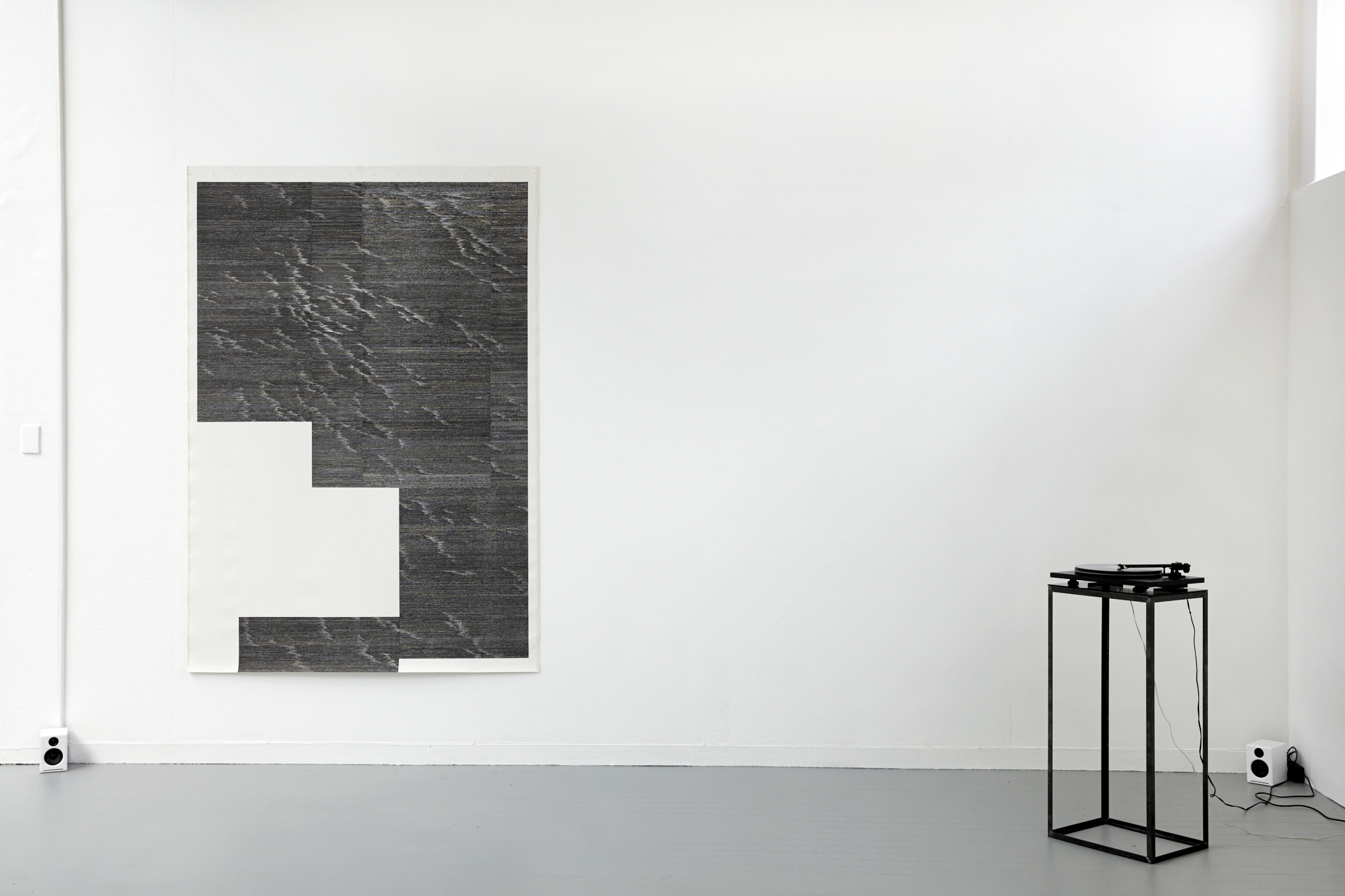
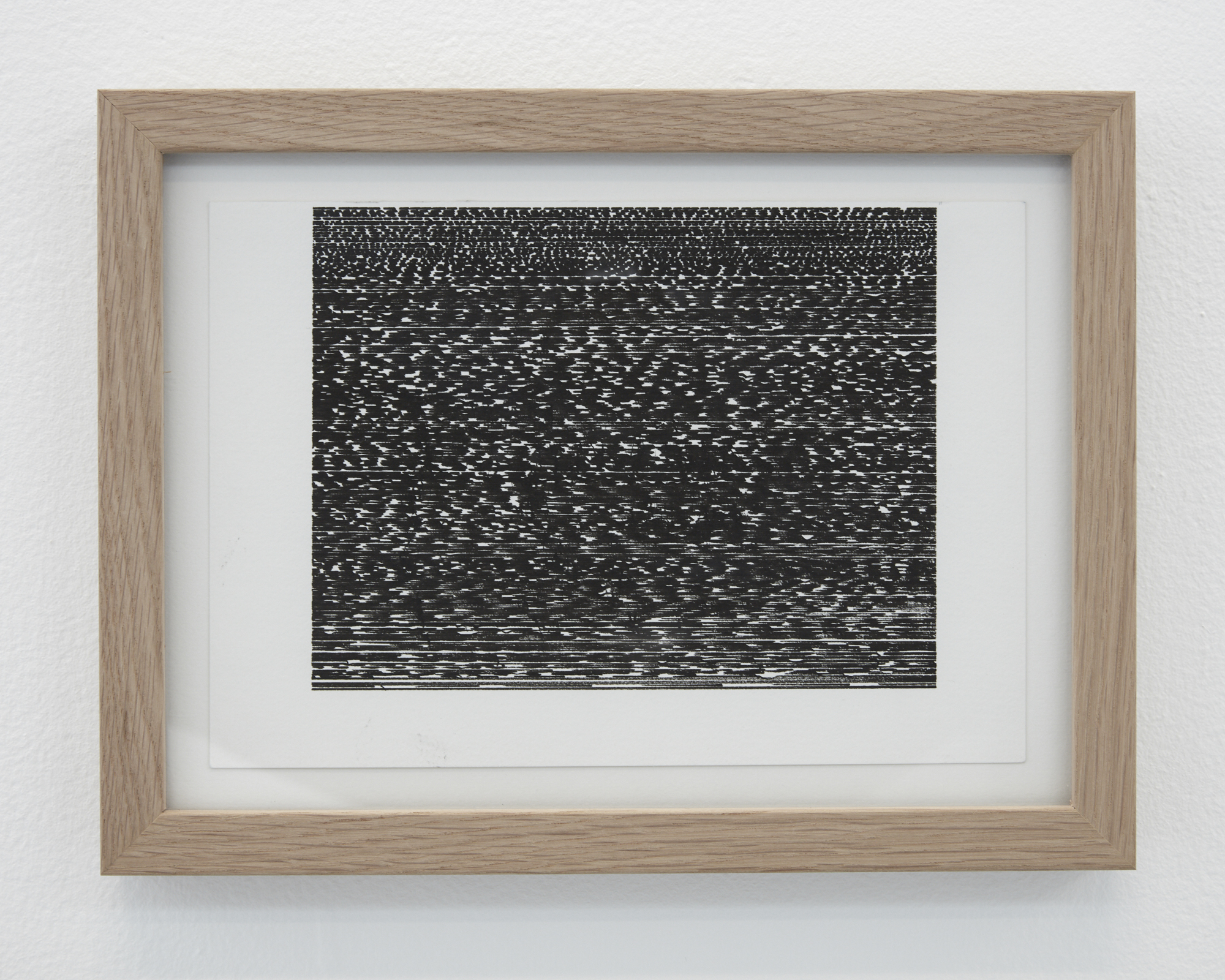

Unsounding
2017. Acrylic ink on unstretched canvas, 2200mm x 1500mm
[Elam Grad Show, University of Auckland]
AVAILABLE
Enquire
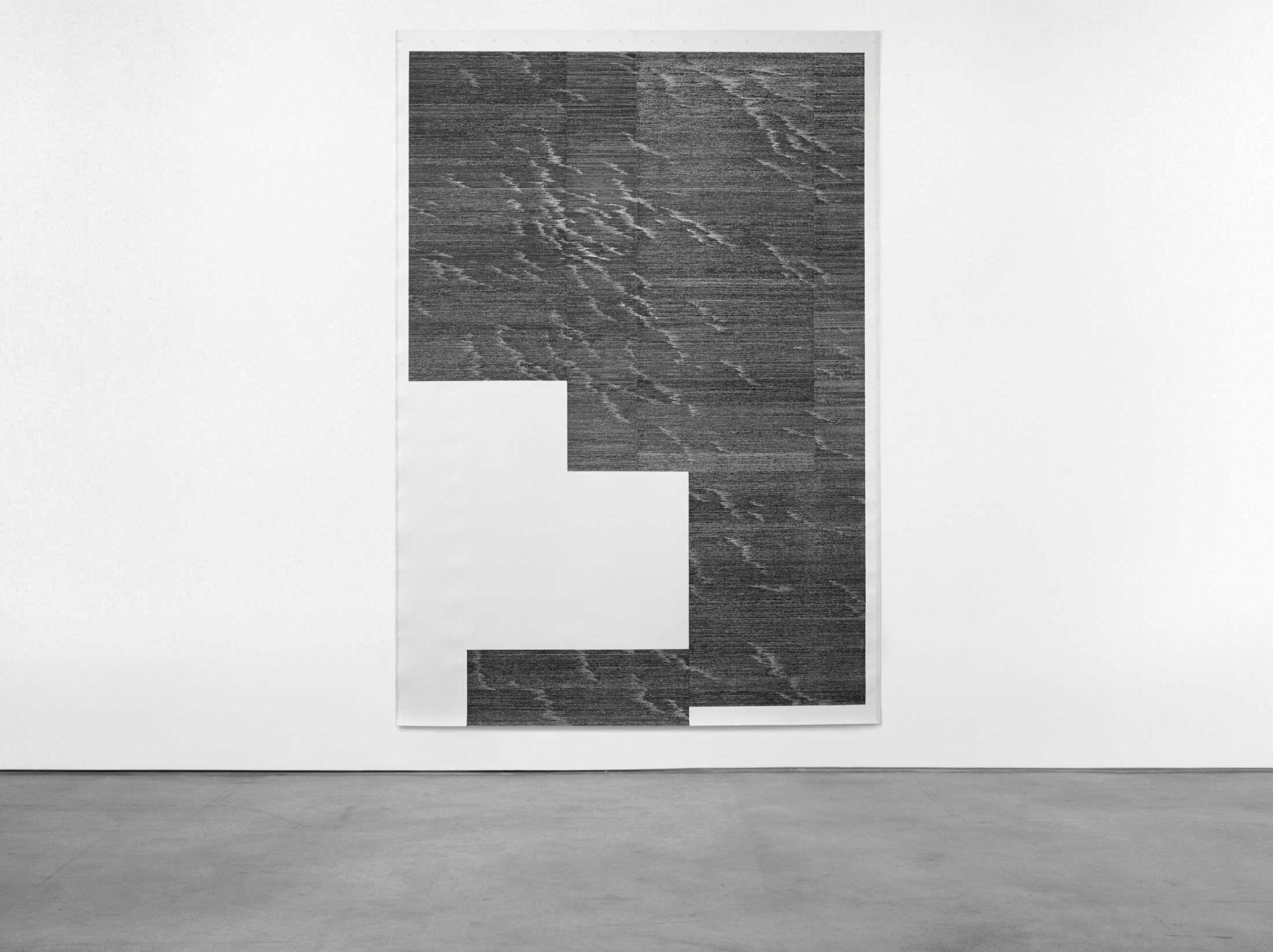

Troubleshooting
2016. Acrylic ink on canvas, 1300mm x 2000mm
[Projectspace, University of Auckland, group show]
AVAILABLE
Enquire
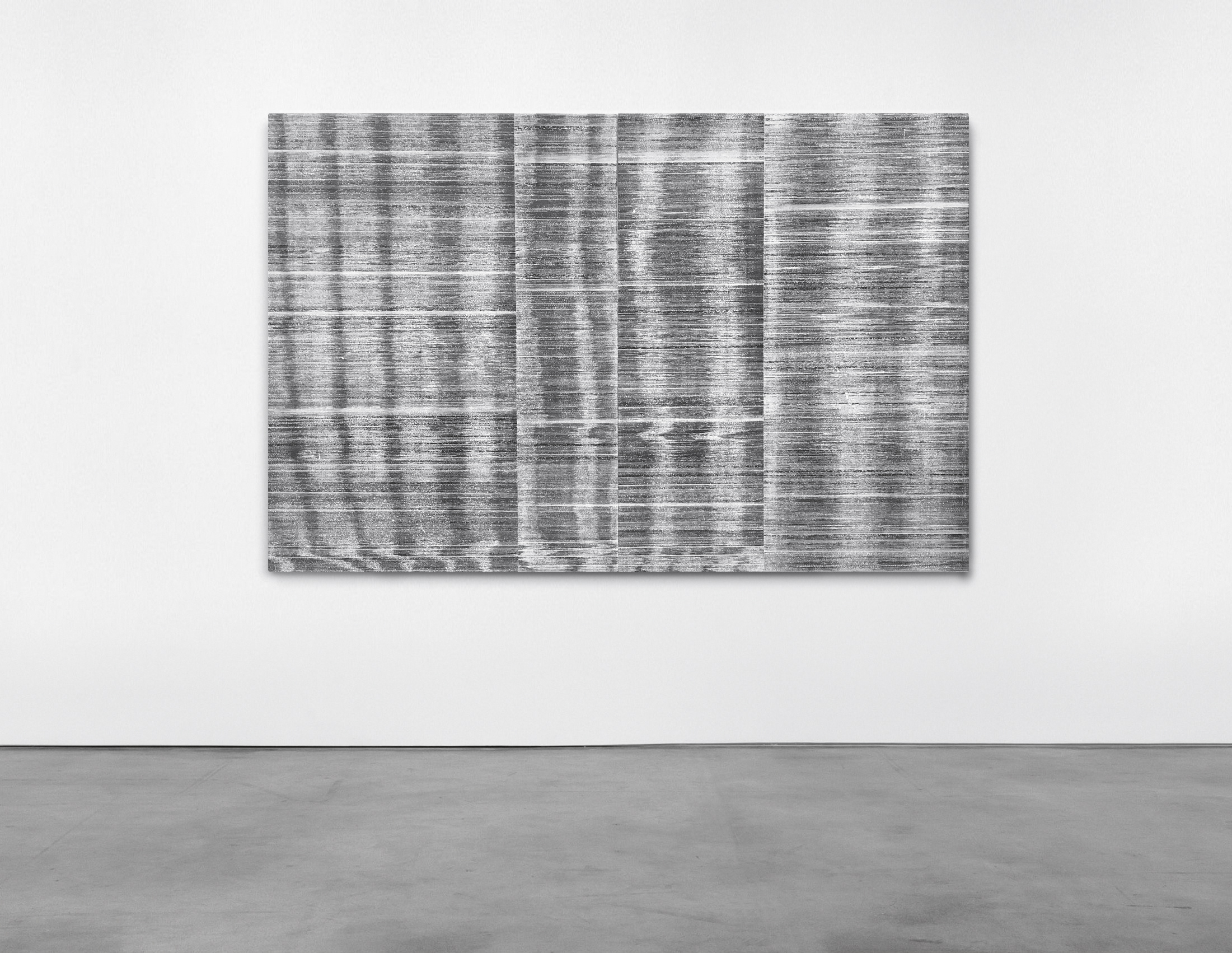
Non Linear Sequence
2015. Acrylic on canvas, 1000mm x 1000mm.
[Wallace Art Awards Finalists Exhibition, The Pah Homestead, Wallace Arts Trust, Auckland; Pātaka, Porirua City]
In the collection of Shirley-Ann and Rick Mannering.
